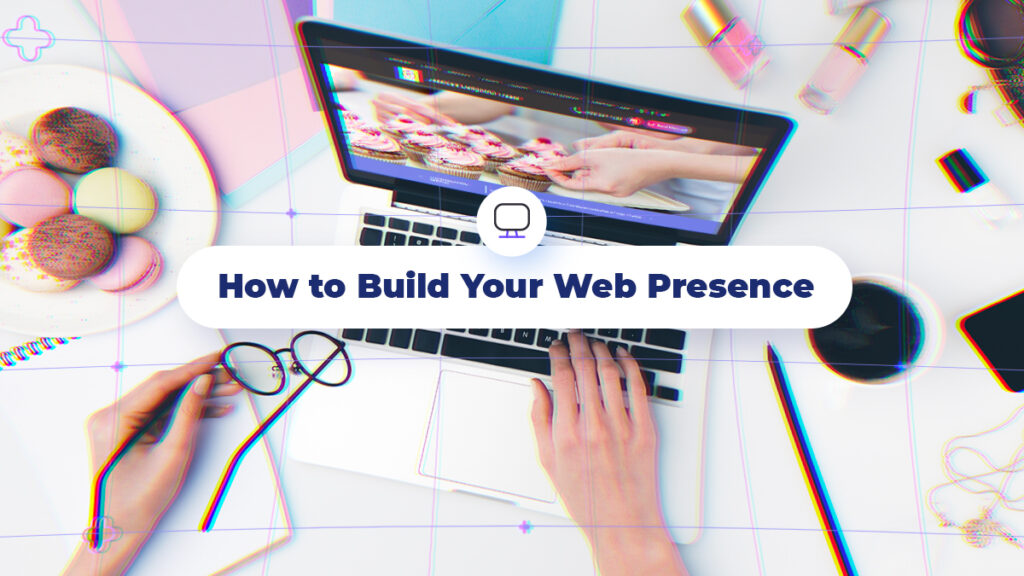Table of Contents
Having a strong web presence is critical to business success. According to an August 2020 report by Techcrunch, IBM’s US Retail index suggests that the pandemic has accelerated the shift from e-commerce to online by 5 years. Traditional department stores experienced a decline of 60%.
A report by Paysafe found that 38% of consumers intend to do more online shopping, even after the lockdown ends. It seems the necessity of staying at home made many more people realise the convenience and ease by which they could access goods and services via the internet.
Having said this, recent estimates suggest that there are over 400 million active websites, and they’re all fighting for a share of attention, and there is a finite amount of that. How do you stand out?
Your web presence is now your shopfront; while you can open your door to the world, it’s one in a vast, diverse marketplace.
Developing your web presence is best done in three steps.
- Understanding Your Business
- Getting a Website
- Using The Right Channels For Promotion
Understanding Your Business

It is very easy to get caught up in the day-to-day concerns of running a business and be almost too pragmatic in deploying a web presence – providing a barebones offering that does the absolute minimum.
That’s a mistake: you need to make sure to take the time to pause and reflect on what your internet presence will say about you and your business.
What is your mission statement? If you make furniture by hand, it may be that your mission is to restore craft to craftsmanship. If you prepare keto meals for customers, your purpose may be to improve customers’ health through tasty, nutritious meals.
Once the mission has been defined, it’s time to distil it.
Be Brief
There is an increasing trend towards brevity; its modern incarnation may have begun with the 1983 Coca-Cola slogan, “Coke is it”. This slogan said everything by saying little: the word “it” was non-committal, it enabled individuals to fill in the gap of what “it” is for themselves.
Three- or four-word slogans have become increasingly prevalent in modern culture: another prominent example is Nike’s Just Do It. Again, what “it” is was up to the individual.
While small businesses are generally more targeted in what they have to offer, these slogans prove that messages should be short and impactful:
Our fictitious Fresh Rise Bakery, for example, could describe their pastries as “buttery, fresh indulgence” – with this slogan, the reader’s sense of taste and smell are evoked, as is their sense of luxury.
The Power of Images
We live in an era defined by images: the prevalence of Instagram and the increasing power of camera phones has turned everyone into a photographer.
We are attracted to images that are bold, funny, and/or encapsulate messages. Fresh Rise Bakery isn’t real (as far as we know), but real companies leverage images frequently.
American Express recently featured individuals holding up their Platinum card with a beach scene in the background, showing how the card was a passport to luxury and enjoyment.
Eyewear company Warby Parker leveraged its quixotic brand by reimaging themselves as a company for dogs called Warby Barker:
You don’t need to be a massive brand to do this. Just remember your messaging, and think of images that will reflect on that.
Get A Website
We all know the old saying that “the journey of a thousand miles begins with a single step”. The good news is that today, taking that first step is is easier than ever.
A website is central to a strong digital presence, and today there are many companies that allow you to create a website for your business often at low cost, sometimes even free.
At UENI, we go a step further and actually build websites for small businesses for free – and when those businesses grow, we provide the additional services they’ll need at a reasonable cost.
Once You Have A Website, Keep It Active
Remember how we said that there were 400 million active websites? That sounds like a lot until you learn that there are 1.9 billion websites overall – in other words, websites that have been abandoned or are no longer updated. Once you have a site, you need to maintain it and promote it in order to increase your web presence.
Maintaining the site will require updating the content regularly, including the images. It should be a vehicle for promoting special offers; offers can be aligned to seasonal events, such as holidays.
Using The Right Social Channels
Aligning your content and product offers allows for easier promotion on social media: for example, a Christmas sale can be latched onto hashtags that are appropriate to the season.
Not all social media is appropriate for the same kinds of promotions, however. Here are the various channels, message types one can send, and the challenges they present:
What kinds of posts can you create?
Short messages with a maximum of 280 characters; videos no longer than 2:20 in length. Up to 4 images per post. Twitter is all about getting your point across quickly and effectively.
What are the challenges?
The biggest one is that Twitter is very time-sensitive: Because posting occurs in real-time, it requires posts that are appropriate for what is happening as you post.
What kinds of posts can you create?
Longer text messages, images, and videos.
Technically, the maximum length of a Facebook post is 63,206 characters, (that’s about 12,000 words or roughly one-sixth of a short novel), but Facebook posts with 80 characters or less receive 88% more engagement.
What are the challenges?
Because Facebook is absolutely saturated with content, coming up with a compelling campaign can be a challenge. In other words: standing out can be difficult.
What kind of posts can you create?
Images and short videos.
What are the challenges?
Create appropriate, powerful images and videos, and write brief texts alongside which compel action. There are several simple tools out there to achieve this: you can use Canva for creating beautifully designed posts, or use an online video editor to create compelling videos.
Instagram can be a great platform for your business, particularly if you sell products and have a good eye for imagery. If this sounds like something you’d like to investigate, check out our guide to building a business on Instagram.
What kind of posts can you create?
Long text posts, images, videos
What are the challenges?
LinkedIn’s focus tends to lean more corporate than on small business; nevertheless, it has high engagement levels and can be a great way to spread your digital presence to other small business owners.
TikTok
What kind of posts can you create?
Videos up to 60 seconds in length
What are the challenges?
TikTok has over one billion users across the globe, and creating visually compelling videos in this short length can be challenging.
Creating effective TikTok content can be difficult, but we have some great information about how to use it for effective social media marketing.
Developing Your Web Presence
There is also one final key to developing your web presence: a willingness to experiment.
Not everything you attempt will guarantee success, just as it’s not possible to predict what precisely will go viral. Some of your images and messages will sink without a trace, others may take off and get thousands of hits.
What you may think will be popular may be so: the key is to learn, pivot and make changes upon learning what it is that elicits the greatest response.
Once you’ve started to develop your web presence, you’ll want to keep close tabs on it. Learn about how UENI can help you manage your online reputation here.

